You searched for: 外贸公司免费推广【TG飞机:@bapingseo】北京seo外包公司【TG电报:@bapingseo】广州谷歌推广产品【Telegram:@bapingseo】米多多麻将手机版下载安装王者荣耀押注平台亚博网址链接足彩2串1不败公式?0sGj9W/sJ5cTS.html
<< Previous | Displaying results 651-699 of 848 for "外贸公司免费推广【TG飞机:@bapingseo】北京seo外包公司【TG电报:@bapingseo】广州谷歌推广产品【Telegram:@bapingseo】米多多麻将手机版下载安装王者荣耀押注平台亚博网址链接足彩2串1不败公式?0sGj9W/sJ5cTS.html" | Next >>
-
Elie Wiesel Timeline and World Events: 1928–1951
ArticleSurvivor Elie Wiesel devoted his life to educating the world about the Holocaust. Learn about key events in the world and his life from 1928–1951.

-
Elie Wiesel Timeline and World Events: From 1952
ArticleSurvivor Elie Wiesel devoted his life to educating the world about the Holocaust. Explore key events in the world and his life from 1952 until his death in 2016.
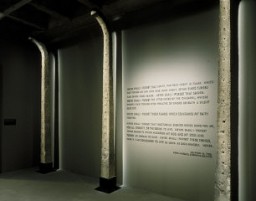
-
Hainewalde
ArticleThe SA established a protective custody camp at Hainewalde in March 1933. Well-known journalist and writer Axel Eggebrecht was among its early prisoners.
-
Testimony on the Escape from the Mir Ghetto by Eliezer Breslin
ArticleRead a summary extract from Eliezer Breslin’s testimony on escaping from the Mir ghetto, given during the WWII war crimes investigation into Semion Serafinowicz.
-
Stephen S. Wise
ArticleStephen Wise (1874–1949) was a prominent Jewish leader in the United States between 1933-1945. Learn more about his work during the Holocaust.

-
SS: Decline, Disintegration, and Trials
ArticleIn 1945, the power and influence of the SS in Nazi Germany started to decline. Learn more about the subsequent disintegration and postwar trials.

-
Le Chambon-sur-Lignon
ArticleFrom 1940 to 1944, Le Chambon-sur-Lignon and neighboring villages provided shelter to some 5,000 people, among them Jews fleeing persecution.

-
Adolf Hitler: 1919-1924
ArticleAdolf Hitler established himself as absolute Führer, or leader, of the Nazi Party by 1921. Learn more about Hitler in the years 1919-1924.

-
Ardeatine Caves Massacre
ArticleNow a national memorial site, the Ardeatine Caves outside Rome were the site of a German reprisal for a bombing by Italian resistance operatives in March 1944.
-
Jewish Aid and Rescue
ArticleJewish groups worldwide helped rescue thousands during the Holocaust. Read more about efforts to save Jews from Nazi persecution and death.
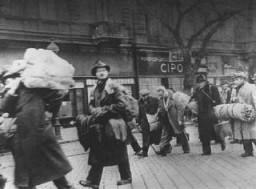
-
Blood Libel
ArticleBlood libels were false allegations that Jews used the blood of non-Jewish children in rituals. Nazi propagandists used this false charge in their antisemitic propaganda.

-
War Refugee Board: Activities
ArticleThe War Refugee Board was a significant US attempt to rescue and relieve Jews and other endangered people under German occupation. Learn about its activities.

-
Jacob Wiener
ArticleExplore Jacob Wiener’s biography and learn about his experiences during Kristallnacht in Würzburg, Germany.

-
Reinhard Heydrich: In Depth
ArticleReinhard Heydrich, Reich Security Main Office chief, was one of the main architects of the “Final Solution," the Nazi plan to murder the Jews of Europe.
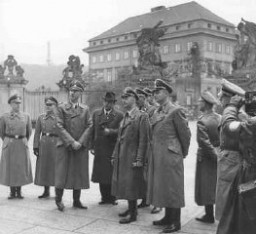
-
The Nazi Persecution of Black People in Germany
ArticleRead about the Nazi persecution of Black people, as well as Black people's experiences in Germany before the Nazi rise to power.
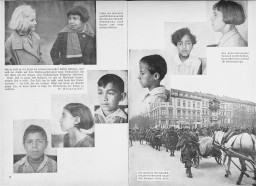
-
Holocaust Survivors and the Establishment of the State of Israel (May 14, 1948)
ArticleLearn more about the establishment of the state of Israel after World War II and its significance to Holocaust survivors.

-
International Military Tribunal at Nuremberg
ArticleThe International Military Tribunal (IMT) opened in Nuremberg within months of Germany’s surrender. Learn about the judges, defendants, charges, and legacies.

-
Introduction to the Holocaust
ArticleLearn about the Holocaust, the systematic, state-sponsored persecution and murder of six million Jews by the Nazi regime and its collaborators.

-
Manya Moszkowicz
ID CardManya was born in Chmielnik, a small Polish town that had a Jewish community dating back to the 16th century. Her father owned a furniture shop and her mother took care of the home. Manya had two younger brothers, David and Mordechai, and was surrounded by many close relatives. She attended both public and Hebrew schools and had many friends. 1933–39: In 1938 Manya's family moved to Sosnowiec, a larger city located near the German border. There she had her first experience with antisemitism. Signs…
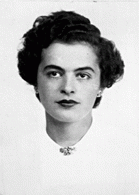
-
Gerd Jacob Zwienicki
ID CardGerd was the eldest of four children. His father, Josef, had left Ukraine in 1913 and opened a bicycle sales and repair shop in Bremen. His mother, Selma, was descended from a distinguished Jewish family and had been a kindergarten teacher and a bookkeeper for a large firm. As a child, Gerd experienced the hardships of the Depression and witnessed the violent street fights between the Nazis and their political opponents, the Communists and Socialists. 1933–39: When the Nazis came to power in 1933, Gerd…
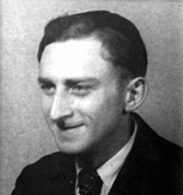
-
Leon Rupnik
ArticleDuring World War II, Slovene general Leon Rupnik collaborated with the forces of Fascist Italy and Nazi Germany. Rupnik was appointed president of the Provincial Government of the German-occupied Province of Ljubljana in 1943. He was convicted of treason and executed in 1946. In 2020, his sentence was annulled on a technicality.
-
Chelmno
ArticleThe Chelmno killing center was the first stationary facility where poison gas was used for mass murder of Jews. Killing operations began there in December 1941.

-
Italy
ArticleItaly was home to one of the oldest Jewish communities in Europe. It was also a member of the Axis alliance with Nazi Germany. Learn about Italy during WWII and the Holocaust.

-
Danuta Justyna
ID CardDanuta was born to Roman Catholic parents in the small industrial town of Piotrkow Trybunalski in central Poland. Her father and mother were school teachers. She and her younger sister, Maria, became friends with two Jewish girls, Sabina and Helena Szwarc. Although their houses were more than a mile apart, the girls often played together. 1933-39: Danuta was planning on attending college in September 1939, but on September 1 Germany invaded Poland. Four days later, German soldiers streamed into Danuta's…
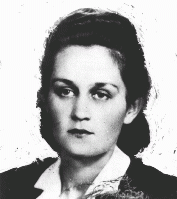
-
Kazimiera Banach Justynowa
ID CardKazimiera was born to Roman Catholic parents in the town of Mierzen. After graduating from a teacher's college in Staniatki, she married Wincenty Justyna, a secondary school teacher. The couple settled in the small industrial city of Piotrkow Trybunalski and raised three children, Jerzy (a boy), Danuta and Maria. Kazimiera worked as a school teacher. 1933-39: With their combined incomes the Justynas were able to buy a plot of land and build a house. The Germans invaded Poland on September 1, 1939, and…
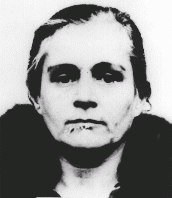
-
Maria Justyna
ID CardMaria was born to Roman Catholic parents in the industrial town of Piotrkow Trybunalski in central Poland. Her father and mother were school teachers. Maria attended grade school and secondary school in Piotrkow. She and her older sister, Danuta, became friends with two Jewish girls, Sabina and Helena Szwarc. Although their houses were more than a mile apart, the girls often played together. 1933-39: The Germans invaded Poland on September 1, 1939, and occupied Piotrkow four days later. Most schooling for…
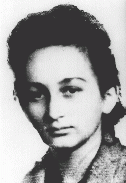
-
Yitzhak (Irving) Balsam
ID CardYitzhak was the second of four children born to religious Jewish parents. The family lived on the Polish-German border in Praszka, a small town where Yitzhak's father worked as a tailor. His work was not steady, and the family struggled to make ends meet. Yitzhak attended Polish public school in the mornings and Hebrew school in the afternoons. 1933-39: At 4 a.m. on September 1, 1939, the Balsams were awakened by an explosion. The Polish army had blown up the bridge over the Prosna River to impede the…

-
Moniek Rozen
ID CardOne of 12 children, Moniek grew up in Dabrowa Gornicza, an industrial town in western Poland. His father, Jacob, owned a general store, which he was forced to close in 1938 as the result of a boycott by local antisemites. Moniek attended both public and Jewish schools, and his father hoped that one day he would become a rabbi. 1933–39: On September 1, 1939, Moniek was awakened by the sounds of airplanes flying overhead as German forces invaded Poland. As the war drew closer, Moniek fled eastward, but…
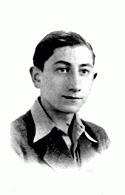
-
Tania Marcus
ID CardTania grew up in Smorgonie, a Polish town where Jews constituted more than half of the population. Her father was a successful businessman who sold farming equipment and purchased flax for export. Her grandfather, an affluent merchant, traveled frequently and brought the first truck to Smorgonie. The Marcuses took part in the town's vibrant Jewish culture, attended the theater, and hosted discussions about art in their home. 1933–39: On September 1, 1939, German troops invaded Poland, triggering World…
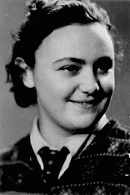
-
Regina Gutman
ID CardRegina was born in Radom, a city that had 120,000 inhabitants. Her father worked as a leather cutter for a large shoe manufacturer and her mother took care of their six children. The Gutmans were very religious and Regina attended Hebrew school in the afternoons. Radom had a vibrant Jewish community of some 30,000 people, several Yiddish daily newspapers, and beautiful synagogues. 1933–39: On September 1, 1939, the German army invaded Poland, and seven days later, Radom was occupied. Soon afterward, the…
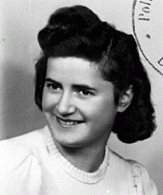
-
Sam Spiegel
ID CardSam was the eldest of five children born to Jewish parents in Kozienice, a town in east central Poland. His father owned a shoe factory and his mother cared for the children and the home. Kozienice had a thriving Jewish community that made up about half of the town's population. 1933–39: On September 1, 1939, German troops invaded Poland. That morning the Spiegels heard an air raid siren blaring and quickly left their house. Fifteen minutes later a bomb struck the building. Sam was just 17 years old.…
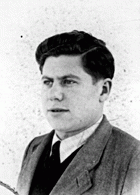
-
Elzbieta Lusthaus
ID CardElzbieta grew up in Iwonicz, a resort town in southwestern Poland noted for its mineral water. Her father, Edmund, was a respected physician and Helena, her mother, had studied pharmacology. At home, they spoke Polish and were among the few Jewish families who lived in Iwonicz. 1933–39: When German troops invaded Poland on September 1, 1939, Elzbieta's father was drafted into the Polish army. Seventeen days later, the Soviet army drove in from the east and Edmund was captured. He was transported to a…
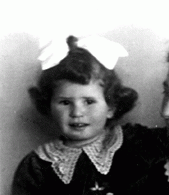
-
Lisa Nussbaum
ID CardLisa was born to a Jewish family who lived in a town about three miles from the German border. Her family had lived there for generations. Lisa's father exported geese to Germany, and her mother owned a fabric store. The family lived with Lisa's grandmother in a large, single-level, gray stucco house. Lisa attended a small Hebrew school in Raczki. 1933-39: In 1937 Lisa transferred to a public school. One day, in fifth grade during recess, some boys grabbed her long blonde hair. Others joined in and pinned…

-
Urszula Kaczmarek
ID CardUrszula was one of four children born to Franciszek and Jadwiga Kaczmarek, who lived in the industrial city of Poznan in western Poland. The family lived at 11 Smolnej Street. Like their parents, the Kaczmarek children were baptized in the Roman Catholic faith. 1933-39: As one of the older children in the family, Urszula helped her mother with the housework. She was 10 years old when the Germans invaded Poland on Friday, September 1, 1939. German planes bombed Poznan that same day, and German troops…
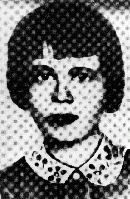
-
Aaron Lejzerowicz
ID CardAaron was one of four children born to a Jewish family in the northeastern Polish town of Zdzieciol. His father was a shoemaker and, along with a business partner, he also ran a shoe store in the town. Aaron attended a private Jewish school, where he studied the Polish language and history as well as Jewish history and Hebrew. 1933-39: On September 1, 1939, Germany invaded Poland. Three weeks later, Poland was partitioned between Germany and the Soviet Union [under the German-Soviet Pact]. Aaron and his…
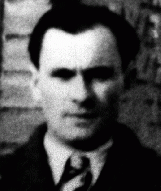
-
Paula Wajcman
ID CardPaula was raised in a religious Jewish family in Kielce, a city in the southeast of Poland. Her family lived in a modern two-story apartment complex. Paula's father owned the only trucking company in the district. Her older brother, Herman, attended religious school, while Paula attended public kindergarten in the morning and religious school in the afternoon. 1933-39: Paula's school uniform was a navy blazer with a white blouse and pleated skirt. At age 9, she did the "Krakowiak" dance at school. Boys…

-
Jakob Frenkiel
ID CardJakob was one of seven boys in a religious Jewish family. They lived in a town 50 miles west of Warsaw called Gabin, where Jakob's father worked as a cap maker. Gabin had one of Poland's oldest synagogues, built of wood in 1710. Like most of Gabin's Jews, Jakob's family lived close to the synagogue. The family of nine occupied a one-room apartment on the top floor of a three-story building. 1933-39: On September 1, 1939, just a few months before Jakob turned 10, the Germans started a war with Poland.…

-
Peter Somogyi
ID CardPeter and his twin brother, Thomas, were the youngest of three children born to an observant Jewish family. They lived in Pecs, an industrial center where goods such as bricks and ceramics were produced. Peter's father owned a prosperous business selling accessories and parts for cars, motorcycles and bicycles. He was also a regional sales representative for Ford automobiles. 1933-39: A German nanny took care of Peter, Thomas, and their older sister. She taught them German and they became quite fluent.…
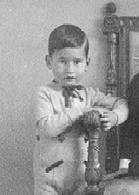
-
Rachel Lejzerowicz Rechnitz
ID CardRachel, or Ruchla as she was called, was raised by Jewish parents in the small southwestern Polish town of Bedzin. In 1930 she moved with her husband, Bernard, to the nearby city of Katowice, where Bernard had a wholesale leather business. The couple lived with their two children, Moses and Genia, in a three-bedroom, upper-floor apartment on Jordana Street. 1933-39: Ruchla was active in Hadassah, a women's Zionist organization, and in 1939 she and her husband prepared to immigrate to Palestine [Aliyah…

-
Feige Schwarzfink
ID CardFeige was born to a religious Jewish family in the small village of Szydlowiec [in Poland]. She lived with her parents, six brothers and sisters, and elderly grandparents in a small house which, like many homes in the village, had no running water, indoor plumbing, or electricity. Feige's father was a shoemaker. 1933-39: In the afternoons after public school Feige studied at a Jewish religious school. Although her parents didn't know it, she attended meetings of the Bund, the Jewish Socialist party. Feige…

-
Helena Manaster
ID CardHelena was the eighth of 10 children born to a Jewish family in the town of Lesko. Her father was a landowner. When Helena was a young girl the family moved to nearby Orelec, where they had a summer home. As there were no schools in Orelec, Helena and her siblings continued attending school in Lesko. Later, Helena traveled three hours by train daily to attend the nearest high school, which was in Przemysl. 1933-39: The German army invaded Poland on September 1, 1939. By the beginning of October the…

-
Celia Petranker
ID CardCelia was the youngest of three daughters born to Jewish parents living in Stanislav [Stanislawow], Poland. Her father was an ardent Zionist, and dreamed of moving his family to Palestine to help build a Jewish homeland. Celia and her sisters attended private Hebrew primary and secondary schools to help prepare them for their eventual immigration to Palestine. 1933-39: Celia's oldest sister, Pepka, left for Palestine one week after the Germans invaded Poland on September 1, 1939. Pepka's departure was…
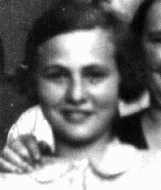
-
Bernard Rechnitz
ID CardBernard was raised by Jewish parents in the small southwestern Polish town of Bedzin. In 1930 Bernard moved with his wife, Ruchla, to the nearby city of Katowice, where he owned a wholesale leather business. The couple lived with their two children, Moses and Genia, in a three-bedroom, upper-floor apartment on Jordana Street. 1933-39: In 1939 Bernard, who was a Zionist, decided the family should emigrate to Palestine [the Yishuv]. His son, Moses, had been the target of antisemitic taunts at school.…
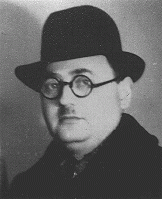
-
Norbert Yasharoff
ID CardNorbert was born to a Jewish family in the Bulgarian capital of Sofia. His father, a prominent lawyer, was also active in the Jewish community, heading relief efforts for the city's Jewish orphans. Sofia was home to approximately half of Bulgaria's estimated 50,000 Jews during the mid-1930s. 1933-39: On September 1, 1939, while on a family vacation the Yasharoffs heard over the radio that war [World War II] had begun. Norbert's parents exchanged worried glances; what would happen to them now? Bulgaria had…
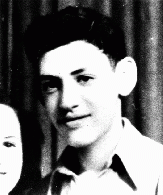
-
Feliks Bruks
ID CardFeliks was the only child of Catholic parents living in Czarnkow, a town close to the German border, some 40 miles north of Poznan. Czarnkow was situated on the Notec River. Feliks' parents owned a mineral water, soda and beer factory. They delivered their goods by horse and wagon to towns throughout the area. His parents also owned a restaurant and 120 acres of farmland. 1933-39: In 1937 Feliks entered the University of Poznan to study pharmacy. His education was cut short when the German army invaded…

-
Jozef Rapaport
ID CardJozef was raised in a religious Jewish family. When he was a baby, his father died and his mother was left to care for him and his three older sisters. The family was poor, but Jozef was determined to have a good education. He put himself through university in Prague, and then went on to earn a Ph.D. in economics in Vienna. In 1931 he married Leah Kohl, and the couple settled in Warsaw. 1933-39: The Rapaports lived in the suburbs, and Jozef worked as a banker. His daughter, Zofia, was born in 1933. Jozef…
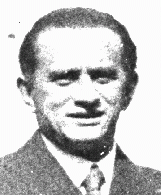
-
Mario Finzi
ID CardMario was the only child of a Jewish couple who were secondary school teachers in Bologna. Like many Italian Jews, his family was well-integrated into Italian society. Even though Fascist leader Benito Mussolini came to power in 1922, Jews in Italy continued to live in safety. Mario played piano as a hobby. When he finished high school in Bologna, Mario went on to study law. 1933-39: In 1938 Mario began practicing law in Milan. But later that year, Mussolini's government issued "racial" laws that…

-
Judith Kalman
ID CardJudith was the only child born to a Jewish couple who lived in Hatvan, a small town 36 miles northeast of Budapest. Judith's father worked in his brother's business, marketing grains and other agricultural products purchased from local farms. When she was 3, Judith gave her first public recitation of poetry, an interest that she pursued throughout her childhood. 1933-39: Judith's family wasn't religious--they were Hungarians who happened to be Jewish, and their family was well-liked in Hatvan. But in the…

-
Janusz Piotrowski
ID CardJanusz was the eldest of four children born to Catholic parents in Plock, a town located in a rural area north of Warsaw. His father was an accountant. Janusz attended local schools, and became active in scouting. 1933-39: Janusz went to Warsaw to study civil engineering. On September 1, 1939, the Germans began bombing Warsaw. One week later, all able-bodied men who had not been mobilized were directed to retreat east. On September 17, Janusz was 90 miles from the Romanian border. That night, the Soviets…

